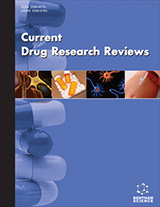
Abstract
Background: Depression is a prevalent psychiatric disorder and one of the leading causes of disability around the world. Herbal and synthetic medications used to treat depression, may interrupt the therapy process and cause adverse effects. Currently, the use of medicinal and phytochemical plants, which have various therapeutic effects and has potential strategy for treating depression. According to the studies, medicinal plants have a variety of effects on the brain system and have antidepressant properties such as synaptic modulation of serotonin, noradrenalin and dopamine as well as inflammatory mediators. According to the literature review, Vinca Rosea extract has a variety of pharmacological activities, but there is no evidence of its antidepressant properties.
Objectives: The main aim of the present study is to gather data from the literature review regarding the antidepressant activity of vincamine alone and along with melatonin.
Methods: According to the review antidepressant activity of various medications can be tested using two different types of studies, including in-vivo and in-vitro.
Results: Clinical and preclinical research suggests that one of the main mediators in the pathophysiology of depression seems to be stress. Depression can be evaluated using experimental methods based on a variety of physical indicators, including locomotor activity, rearing, faeces, and the quantity of entries in the centre square (in-vivo and in-vitro). Biological conditions can be used to find it as well. It has been successfully concluded that vincamine, either alone or in combination with melatonin, may provide a potential role as an antidepressant.
Conclusion: According to the Globe Health Organization, depression will become the most common cause of loss of interest in working in the world. As a result, depression research is one of the most significant ways in which we might create new treatments in the form of vincamine and combination with melatonin for depression and improve existing therapies to make them work better for depressed people. It will also aid in the development and creation of novel ways for the better treatment of depression.
Keywords: Depression, melatonin, vincamine, serotonin, noradrenaline, biomarkers, WHO.
[http://dx.doi.org/10.1056/NEJMra073096] [PMID: 18172175]
[http://dx.doi.org/10.1002/hup.288] [PMID: 12404573]
[http://dx.doi.org/10.1111/j.1749-6632.1962.tb50122.x] [PMID: 13918341]
[http://dx.doi.org/10.1186/s12888-015-0589-4] [PMID: 26328614]
[http://dx.doi.org/10.1038/nrn1846] [PMID: 16429123]
[http://dx.doi.org/10.3329/bjp.v12i1.29184]
[http://dx.doi.org/10.1001/archpsyc.55.12.1121] [PMID: 9862556]
[http://dx.doi.org/10.1155/2017/6596241] [PMID: 28503571]
[http://dx.doi.org/10.1016/0166-2236(95)93942-Q] [PMID: 7535490]
[http://dx.doi.org/10.1016/j.pbb.2007.04.009] [PMID: 17509675]
[http://dx.doi.org/10.1016/S0193-953X(05)70006-X] [PMID: 9670227]
[http://dx.doi.org/10.1016/j.pnpbp.2012.10.017] [PMID: 23123357]
[http://dx.doi.org/10.1016/j.pnpbp.2010.05.004] [PMID: 20471444]
[http://dx.doi.org/10.1016/j.neuroscience.2015.02.053] [PMID: 25791226]
[http://dx.doi.org/10.1016/j.jchromb.2015.02.037] [PMID: 25770791]
[http://dx.doi.org/10.3748/wjg.v12.i48.7844] [PMID: 17203531]
[http://dx.doi.org/10.1016/j.euroneuro.2011.04.002] [PMID: 21601431]
[http://dx.doi.org/10.1007/s00213-002-1253-5] [PMID: 12404088]
[http://dx.doi.org/10.1111/j.1476-5381.2011.01456.x] [PMID: 21518336]
[http://dx.doi.org/10.1016/j.jep.2008.10.012] [PMID: 19013512]
[http://dx.doi.org/10.2165/00023210-200317080-00001] [PMID: 12775192]
[http://dx.doi.org/10.1016/j.jep.2010.04.035] [PMID: 20441789]
[http://dx.doi.org/10.1016/j.pnpbp.2009.03.004] [PMID: 19286446]
[http://dx.doi.org/10.5897/JPP2013.0280]
[http://dx.doi.org/10.1007/s10354-007-0428-4] [PMID: 17704979]
[http://dx.doi.org/10.1055/s-2007-979325] [PMID: 9832350]
[http://dx.doi.org/10.1021/ja01543a060]
[http://dx.doi.org/10.1034/j.1600-079X.2003.02112.x] [PMID: 12485365]
[http://dx.doi.org/10.3389/fpls.2016.00575] [PMID: 27200048]
[http://dx.doi.org/10.1111/jpi.12018] [PMID: 23110400]
[http://dx.doi.org/10.1211/0022357011777747] [PMID: 11697548]
[http://dx.doi.org/10.1201/9781315369334-6]
[http://dx.doi.org/10.1111/j.1600-079X.2011.00966.x] [PMID: 21988707]
[http://dx.doi.org/10.1007/s11738-015-1850-7]
[http://dx.doi.org/10.1111/j.1600-079X.2006.00379.x] [PMID: 17014695]
[http://dx.doi.org/10.1096/fj.06-7745com] [PMID: 17314136]
[http://dx.doi.org/10.1016/S0024-3205(03)00252-2] [PMID: 12726883]
[http://dx.doi.org/10.1093/jxb/err256] [PMID: 22016420]
[http://dx.doi.org/10.1111/j.1600-079X.2009.00668.x] [PMID: 19317796]
[http://dx.doi.org/10.1556/oh.2007.28115] [PMID: 17631470]
[PMID: 12498034]
[PMID: 12690640]
[http://dx.doi.org/10.3390/medicines2020093] [PMID: 28930203]
 12
12 1
1



























